Ordo An abstract board game for 2 players by Dieter Stein
Material
- 10 × 8 board
- 2 × 20 pieces in two colors
Terminology
“Group”
Orthogonally or diagonally connected group of all pieces of a player.

“Singleton”
A single piece (in contrast to an → ordo).
“Ordo”
Orthogonally (in a straight horizontal or vertical line) connected group of two or more pieces of a player.
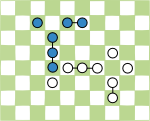
“Home row”
Nearest row on the board seen from a player’s perspective.
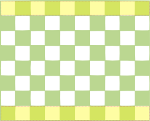
Setup
Pieces are setup as shown in the following figure.

Objective
Players move their pieces trying to reach the opponent’s home row.
Play
Players choose their colors and take a seat on their side of the board. White starts, then players take turns making a move. They may not pass.
Connection
Moves and Captures
There are two possible ways to move the pieces: singleton moves and ordo moves.
Singleton Move
A singleton can move forward or sideways, orthogonally or diagonally in a straight line any number of empty squares. It may end the move in an empty square or a square occupied by an opponent’s piece, which is then captured and removed from the board.

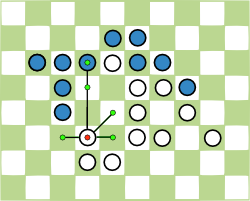
Ordo Moves
A group of more than one piece, which is connected in a straight horizontal or vertical line (a so called ordo), can move side by side any number of empty squares. An ordo may only move orthogonally (not diagonally) forward (if it is horizontally aligned) or sideways (if it is vertically aligned), the same number of squares. It may not capture.
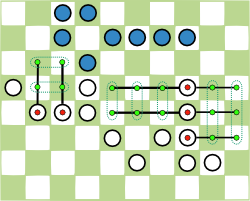
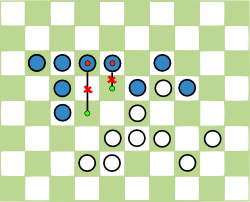
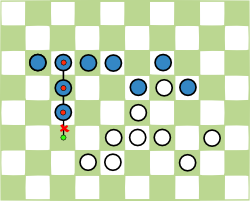
Disconnection
If a player’s group is disconnected because of a capture move by the opponent, that player must move (or capture) such that the group is connected again. If no such move is possible, the game is lost immediately.
Normally, pieces move forward or sideways. In case of a split group (and only then), pieces may also move backwards. This is also true for ordo moves.
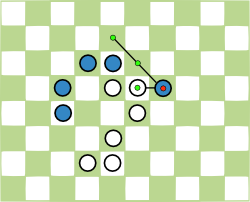
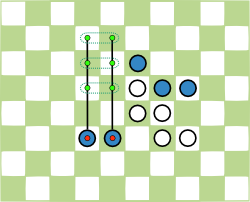
End of the Game
The main goal of the game is to place (at least) one piece on the opponent’s home row.

Also, players lose a game
- if they cannot reconnect their group, after a split capture by the opponent
- if they have no pieces left on the board
Remark
If a player has only one piece left, said piece is still considered a group!